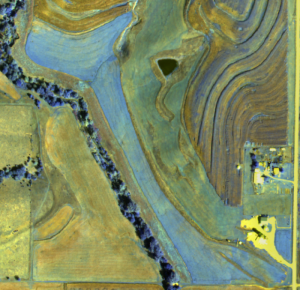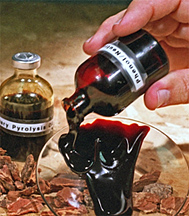 A majority of growers and other agricultural professionals turn to online sources first for general information about their industry, and over half of them use mobile or handheld devices 10 or more times per workday. These are some of the key findings in a recent Syngenta survey, in which more than 300 readers of Thrive, the company’s production-focused magazine and website, responded to questions about their online habits and appetites.
A majority of growers and other agricultural professionals turn to online sources first for general information about their industry, and over half of them use mobile or handheld devices 10 or more times per workday. These are some of the key findings in a recent Syngenta survey, in which more than 300 readers of Thrive, the company’s production-focused magazine and website, responded to questions about their online habits and appetites.
Anthony Transou, Internet marketing manager at Syngenta, is not surprised that, like other industries, U.S. agriculture is embracing digital communications—from social media campaigns and blogs to precision farming and recordkeeping.
“Digital platforms give users a way to share and learn from others in the agricultural industry, whether they are around the corner in their communities or across the globe,” he said. “One of our key concentrations is to create optimized content that can spread across channels and be consumed anywhere, so there is a seamless experience from desktop to mobile users.”
Transou’s team has made several recent adjustments and additions to the Syngenta digital platform. For example, new websites like Tools to Grow More Soybeans and the Quilt Xcel®Fungicide Stress Management Training Module help growers locate information about specific issues or products more easily. Another recent online development is the Know More, Grow More agronomy blog, which features tips and local news updates from Syngenta agronomic service representatives. Twitter, Facebook and YouTube channels are also convenient ways for growers to interact with Syngenta via questions, comments, contests and general discussions.
“Additionally, we are adding online companions to many of our print communications, including Thrive magazine,” Transou said. “This digital initiative allows us to reach a larger audience and provide deeper, more interactive content.”
One of his team’s proudest accomplishments is updating the company’s flagship grower-focused website, FarmAssist.com. This online resource has evolved into a one-stop shop for news, market updates and information about the Syngenta product portfolio. But until 2012, FarmAssist users needed a desktop computer for the site’s features to work properly. That changed with the launch of m.farmassist.com, a mobile-optimized version of the website that allows cellphone and tablet users to access the same capabilities as if they were on a desktop computer.
“Our current suite of digital assets is a result of our early preparation to become an active participant in the digital world,” Transou said. “We thought about a mobile strategy for Syngenta very early on so we could easily transition our content and existing assets to some of the emerging technologies and mediums.”
Looking forward, Syngenta aims to include more interactive localized content, which is a process of natural progression with the increasing use of mobile technology in agriculture. Transou said he envisions being able to send growers and other users pest alerts, weather information, market prices and yield data specifically targeted to their local areas.
The nature of digital communications allows Syngenta to gather and analyze customer feedback, which it uses to constantly improve existing digital assets and formulate ideas for new ones. The Thrive online survey is a good example of how the team uses feedback to influence content creation. Because respondents indicated that they are most interested in production best practices and new product information, the editorial team will start developing more articles and Web content around those topics.
“Farmers understand that information is now flowing in a digital world, especially the well-connected younger generation,” he said. “Our ultimate goal at Syngenta is to give growers the most positive digital experience in the industry.”
 The first defense in the war against weeds is knowing the enemy, according to BASF Crop Protection.
The first defense in the war against weeds is knowing the enemy, according to BASF Crop Protection. Often, the same weed species will show up in a field year after year, so it is important to know where problem weeds live.
Often, the same weed species will show up in a field year after year, so it is important to know where problem weeds live.
 The production ag community has envisioned the many benefits of utilizing UAV technology since its inception. With many affordable solutions on the market today, ag professionals have begun offering services, and growers have realized the opportunity of using their own UAVs in their operations. While UAVs have become more affordable, often this technology has required the purchase of additional software programs to stitch, process and analyze captured imagery. While
The production ag community has envisioned the many benefits of utilizing UAV technology since its inception. With many affordable solutions on the market today, ag professionals have begun offering services, and growers have realized the opportunity of using their own UAVs in their operations. While UAVs have become more affordable, often this technology has required the purchase of additional software programs to stitch, process and analyze captured imagery. While 









